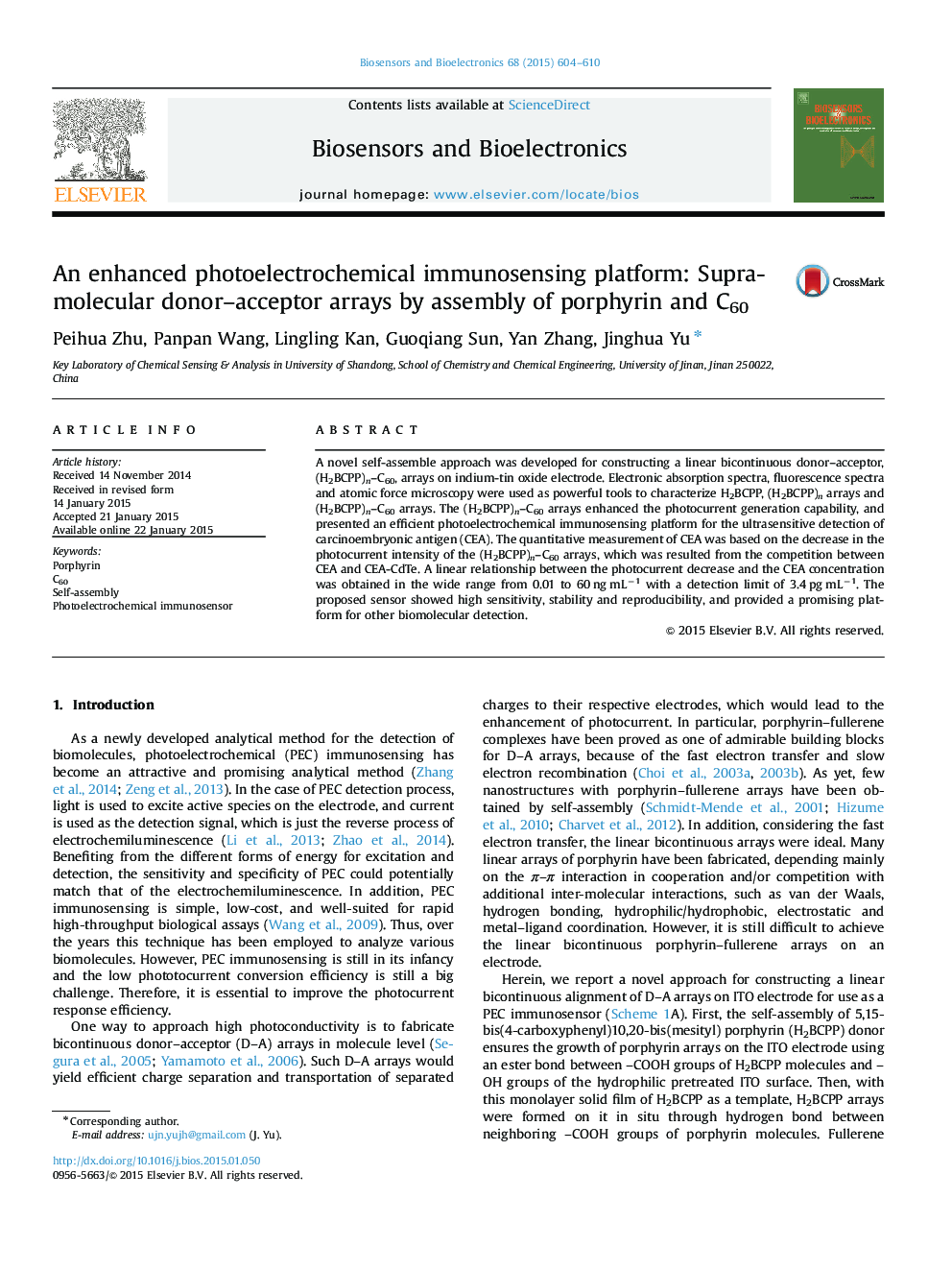| Article ID | Journal | Published Year | Pages | File Type |
|---|---|---|---|---|
| 7232685 | Biosensors and Bioelectronics | 2015 | 7 Pages |
Abstract
A novel self-assemble approach was developed for constructing a linear bicontinuous donor-acceptor, (H2BCPP)n-C60, arrays on indium-tin oxide electrode. Electronic absorption spectra, fluorescence spectra and atomic force microscopy were used as powerful tools to characterize H2BCPP, (H2BCPP)n arrays and (H2BCPP)n-C60 arrays. The (H2BCPP)n-C60 arrays enhanced the photocurrent generation capability, and presented an efficient photoelectrochemical immunosensing platform for the ultrasensitive detection of carcinoembryonic antigen (CEA). The quantitative measurement of CEA was based on the decrease in the photocurrent intensity of the (H2BCPP)n-C60 arrays, which was resulted from the competition between CEA and CEA-CdTe. A linear relationship between the photocurrent decrease and the CEA concentration was obtained in the wide range from 0.01 to 60 ng mLâ1 with a detection limit of 3.4 pg mLâ1. The proposed sensor showed high sensitivity, stability and reproducibility, and provided a promising platform for other biomolecular detection.
Related Topics
Physical Sciences and Engineering
Chemistry
Analytical Chemistry
Authors
Peihua Zhu, Panpan Wang, Lingling Kan, Guoqiang Sun, Yan Zhang, Jinghua Yu,
